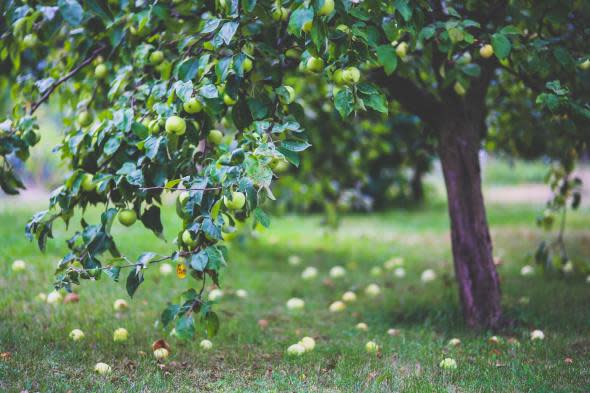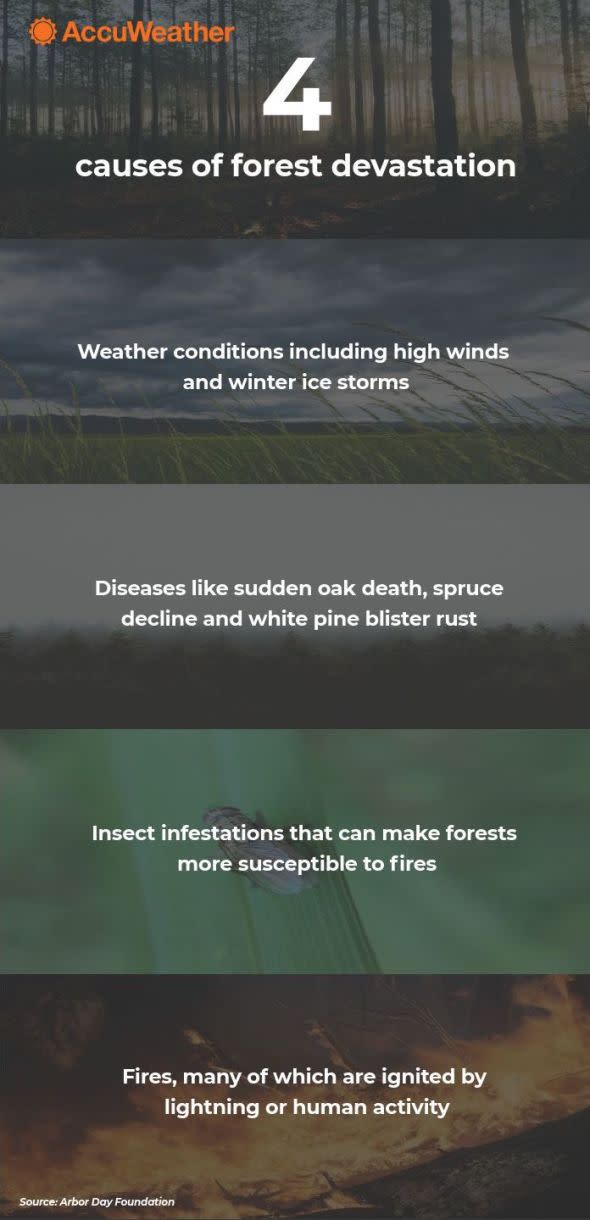Why Arbor Day tree planting is so essential in the wake of devastating wildfire, hurricane seasons
In recent years, natural disasters, including destructive wildfires and hurricanes have ravaged millions of trees and forests across the United States.
Some wildfire-scorched areas are so severely damaged that natural regeneration is impossible, according to the Arbor Day Foundation.
U.S. Forest Service resources have mostly been diverted to fending off massive wildfires, leaving a lot less funding available for replanting devastated trees.
It's why replanting a tree on Arbor Day, which is recognized annually on the last Friday in April, is considered so essential to helping nature bounce back from the negative impacts of fires, diseases, weather conditions or insect infestation.

"Every Arbor Day is important, but this past year has been especially notable for the amount of natural disasters that have threatened our trees," said professional arborist Mark Chisholm. "It's important not only to replant trees we've lost, but also protect the trees we have."
The Arbor Day Foundation noted that when forests experience destruction, time is of the essence. If trees aren't replanted within a reasonable time frame, invasive tree species and fire-prone brush could dominate, wildlife will be left homeless and critical watershed areas won't be able to provide clean water.
"There's a really serious effort to reforest Earth," said Earth Day Network President Kathleen Rogers. "We need to reforest in specific areas, but we also need to reforest our own communities."
Recent devastation
The Arbor Foundation's Community Tree Recovery Program has helped restore trees in communities following natural disasters over the past six years.
After Category 5 Hurricane Katrina slammed the Gulf Coast in 2005, the Arbor Day Foundation was able to get just over 130,000 trees back to residents of Louisiana and Mississippi by the following year, said Community Tree Recovery Program Manager Abbie Eisenhart.
Following hurricanes Harvey, Irma and Maria in 2017, the Community Tree Recovery Program set a goal of restoring five million trees to Texas, Florida and Puerto Rico, within five years of the storms.
The program has also addressed the need for more trees in the wake of devastating tornadoes, including the deadly twister that decimated Joplin, Missouri, in 2011.
In a five-year period, the program distributed over 4.6 million trees across 27 different campaigns and 18 states at over 300 unique distribution events, according to Eisenhart.
"[The program] is growing, but unfortunately, that's because disasters seem to be happening more frequently, and when they do, they seem to be more violent and causing further damage," Eisenhart said.
"There's still a lot of need out there, and we're just barely scraping the surface," she added.
Why trees are so vital
Trees play an indispensable role in life on Earth and can help combat climate change.
"Fifty percent of the countries who signed the Climate Agreement have reforestation as a way of reaching their climate goals," Rogers said.
"[Trees are] the lungs of the Earth," she added. "They all absorb carbon dioxide and provide shade and homes for wildlife, but when you have big forests and certain kinds of forests, they act as a kind of sponge for CO2."

In addition to regulating greenhouse gases including CO2, trees planted in urban areas help reduce ozone, which can be harmful to health over time.
Trees planted in the urban outdoors also provide cities with natural cooling, reducing the heat island effect, the phenomenon of metropolitan areas being warmer than their surroundings, said Fantastic Services horticulturist and plants expert Gena Lorainne.
"A mature, healthy tree with a well-developed canopy can produce enough oxygen to sustain two adult human beings," Lorainne said.
Trees also improve the water cycle in an area, and water evaporation from trees is responsible for rain in places that are not close to a natural water source, according to Lorainne.
"Vegetation's density is strictly related to rainfall," she said. "A mature tree would evaporate around 350 gallons of water from its leaves per day."
Lorainne noted that overall deforestation contributes to flooding and drought, with drought being responsible for disastrous wildfires.
"Trees also help reduce energy costs, so when you're looking at your house and where you plant your tree, that can change your heating and cooling bills," said Eisenhart.
How you can help
Tree planting on Arbor Day and throughout the year can leave a tremendous impact, which is why arborists encourage involvement within communities.
Those seeking opportunities to plant trees can check online for local groups that might actively plant trees, Chisholm suggested.
"If not, start [your own group]!" he said. "Remember this: right tree, right place; not all trees thrive in all conditions or climates."
Chisholm advised planting trees away from power lines, roofs and foundations to give them room to grow both vertically and horizontally.
"From soil runoff along rivers to providing shade and increasing property values, it's a combination of economic, health and climate benefits that makes reforestation so very critical," Rogers said.
